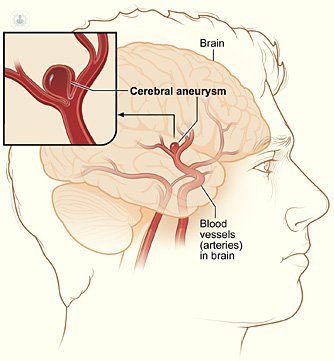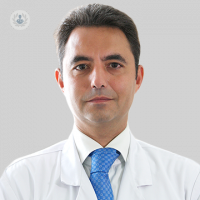Prevent a stroke treating the aneurysm
Written by: An aneurysm is an abnormal dilation of blood vessels, which can in many cases lead to serious complications even to endanger the patient's life. The vascular surgery , with early detection programs, is able to diagnose the presence of these aneurysms and if necessary treat and prevent potential complications associated sequelae.
An aneurysm is an abnormal dilation of blood vessels, which can in many cases lead to serious complications even to endanger the patient's life. The vascular surgery , with early detection programs, is able to diagnose the presence of these aneurysms and if necessary treat and prevent potential complications associated sequelae.
What is an aneurysm?
The aneurysm is a pathological or exaggerated dilation of a blood vessel, usually an artery. It usually affects large arteries, including the aorta is the main artery thoracic or abdominal. It can also affect iliac arteries, popliteal and femoral. It can also affect visceral arteries and renal arteries, splenic ... Other locations are rare.
Symptoms of aneurysm How to detect them ?
Aneurysms are usually asymptomatic, ie no symptoms that give evidence that the patient has. On examination, they manifested by the presence of a pulsatile mass. But usually, the symptoms of an aneurysm often occur because of its complications such as by rupture of the aneurysm or thrombosis of the aneurysm.
Aneurysm rupture generates a sudden and massive bleeding that is accompanied sometimes lightheadedness, loss of consciousness, severe hypotension, vegetative syndrome and sudden, severe pain.
Thrombosis generates an acute ischemia, which is the sudden absence of distal irrigation to the affected area. The main symptoms are severe pain, feeling of coldness, pallor, paresthesia or numbness, paralysis or mobility deficits and absence of pulses.
Aneurysm treatment
The aneurysm treatment is urgent and optional when complications occur in absence thereof, then depending on the size of the aneurysm.
The trend is to treat this condition, whenever possible, by endovascular techniques such as stenting an aneurysm. These techniques are performed with locoregional anesthesia, used to numb areas of the body but without altering the consciousness of the patient. Endovascular process allows a quick and complete recovery with very low risk.
When it is not possible endovascular treatment, a conventional surgical repair is performed, the operation of the aneurysm is resected and implementation of a bypass.
For small or nonsurgical aneurysms, the procedure is to take strict control of cardiovascular risk factors to prevent strokes, especially control high blood pressure and regular monitoring of aneurysms, semiannually or annually depending on the size.


